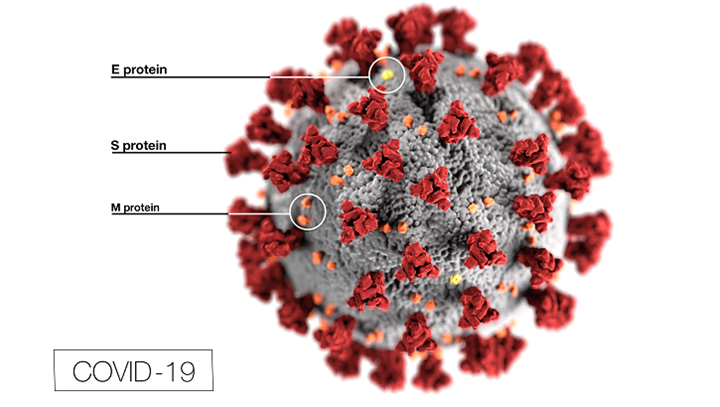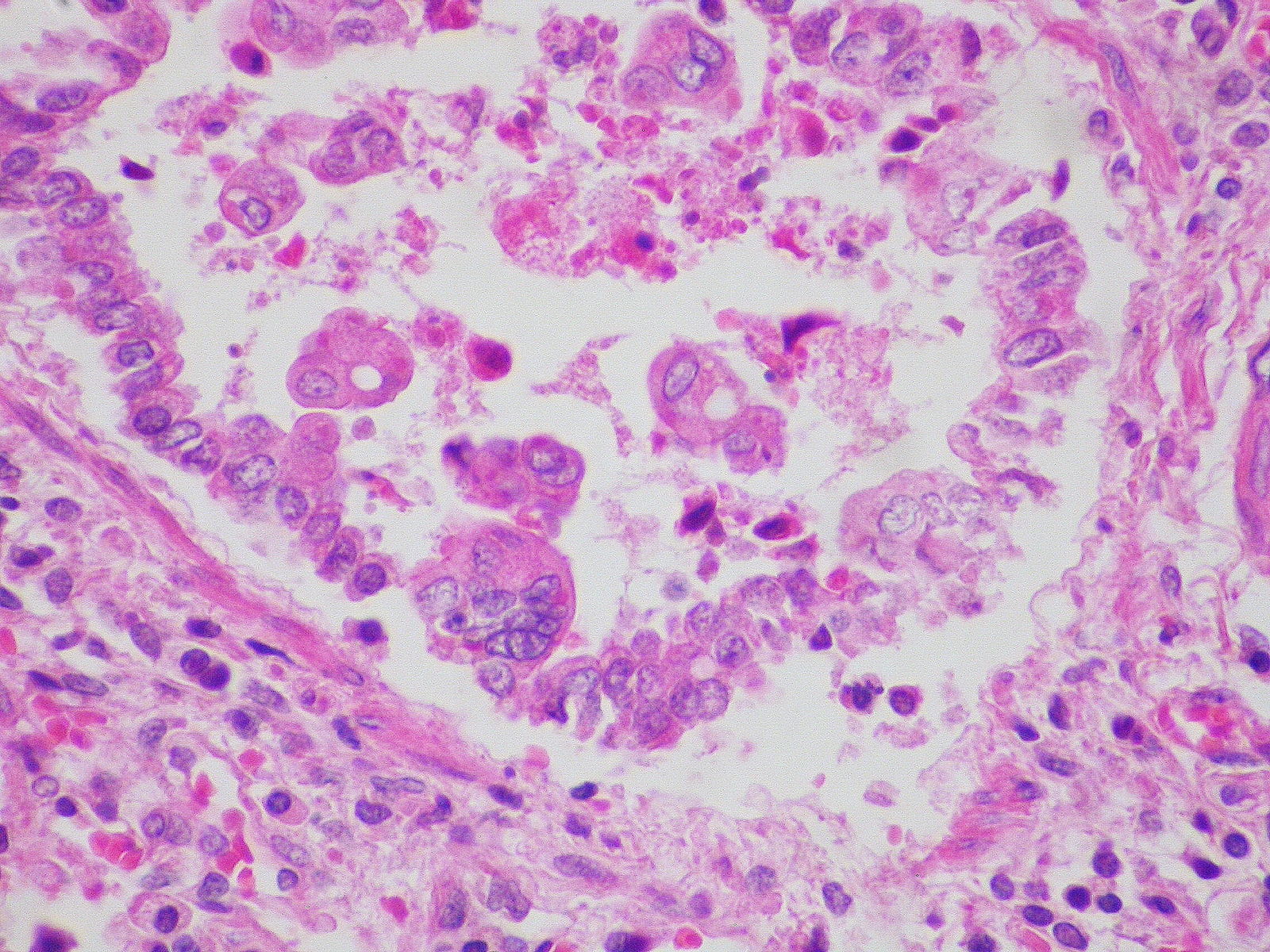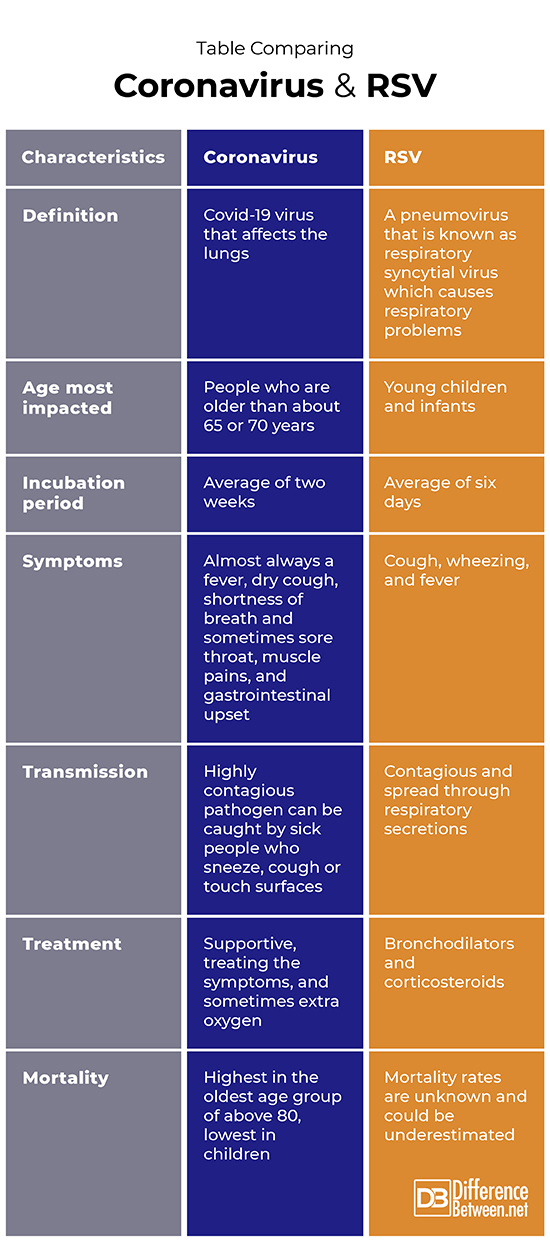Difference Between Coronavirus and RSV
Coronavirus is also called Covid-19 and commonly causes lung problems in people who are infected. RSV is respiratory syncytial virus which causes respiratory issues in children and babies.

What is Coronavirus?
Definition:
Coronavirus is also known as Covid-19 and is a newly discovered virus that causes respiratory problems, most specifically affecting the lungs, in people who are infected.
Symptoms and complications
One of the most frequently occurring symptoms of Covid-19 is a fever. The cough is generally dry and people may experience some shortness of breath. Muscle pains and some nasal congestion as well as some stomach issues can occur as well. Complications and risk of death is much higher in people who already have an illness, particularly a problem with the heart or chest, or have diabetes. The mortality rate is much higher in older people above 65 and 70 years of age. Complications include acute respiratory distress syndrome, multiple organ failure, and death.
Diagnosis:
Diagnosis is made based on noting the symptoms, and infection is suspected if the person has recently travelled from an area where there is an outbreak, or treated an infected person. A molecular test can be done to confirm the diagnosis.
Transmission:
The spread of Covid-19 has been very rapid, spreading all around the world within a few months. The virus is highly contagious and believed spread through infected individuals coughing and sneezing and touching surfaces. The high contagiousness has led people to be quarantined to try to avoid further spread through populations.
Risk factors:
The greatest risk factor is contact with sick, infected people, and includes those people present in an area with an outbreak of Covid-19, and people in close contact with sick individuals; this includes doctors and nurses who treat infected patients.
Treatment and prevention:
Supportive treatment is done in which symptoms are treated with pain killers, fever reducers, and sometimes extra oxygen has to be given. People should try to avoid going to countries or places where there is an outbreak of Covid-19. Washing your hands properly with soap and water for at least 30 seconds or longer is also recommended as is avoiding touching your face.

What is RSV?
Definition:
RSV is respiratory syncytial virus, which is a type of pneumovirus which causes a kind of respiratory problem in children and babies.
Symptoms and complications:
RSV starts out with symptoms associated with the upper parts of the respiratory system and then it causes the development of wheezing and a cough. Children usually have a fever and may find it is hard to breathe. It can lead to the need for hospitalization in some cases. Adults can catch RSV but it is more typically a problem for children.
Diagnosis:
Physical symptoms noted in infants and small children can suggest the RSV infection, but definitive diagnosis is best done by RT-PCR tests or antigen tests.
Transmission:
Children can become infected from other sick children and infants through viral particles in respiratory droplets expelled by cough or sneeze, and through touching contaminated surfaces.
Risk factors:
Young children and infants are at highest risk, particularly if they are near others who are sick. Premature infants and any children who have a compromised immune system or are chronically ill are at great risk of contracting RSV.
Treatment and prevention:
Medication is often given to help to open the breathing passages and to help with inflammation. To this end, corticosteroids and bronchodilator-type medicines can help. Prevention is by avoiding contact with ill people and careful hand washing and disinfecting of surfaces.
Difference between Coronavirus and RSV?
Definition
Coronavirus is also called Covid-19 and is a newly discovered virus that affects the respiratory system. RSV is respiratory syncytial virus, a common virus that mainly children and infants get.
Age most impacted
Covid-19 has the greatest impact on adults, particularly those over 65 or 70 years old, in which a more severe illness occurs. RSV typically makes children younger than 5 years ill, including infants.
Incubation period
Symptoms of Covid-19 coronavirus appear sometimes as long as two weeks after exposure. Symptoms of RSV appear about six days after exposure.
Symptoms
The Covid-19 virus causes a fever in over 80 percent of infected people; it can cause a sore throat and usually a dry cough and shortness of breath. RSV causes wheezing, cough, and sometimes difficulty in breathing.
Transmission
The Covid-19 virus is very contagious and believed to be spread through sick people who cough and sneeze and touch surfaces. The RSV virus is spread through respiratory secretions.
Treatment
Supportive treatment is used for Covid-19 and often extra oxygen may need to be given if the lungs become badly compromised. Corticosteroids and bronchodilators are used to treat individuals who have RSV infection.
Mortality
Mortality rate of Covid-19 is age-based with the highest deaths occurring in the oldest people, so people over 80 are at greatest risk of death while children are at lowest risk of death. Mortality rate of RSV is not known but some believe it is underestimated.
Table comparing Coronavirus and RSV

Summary of Coronavirus Vs. RSV
- Both Covid-19 and RSV cause respiratory symptoms and are contagious.
- Covid-19 is rapidly spreading around the world leading to quarantine of groups of people.
- RSV is commonly found in children where it has the biggest impact, while Covid-19 is less commonly a problem for children.
- Covid-19 causes the most deaths among the very old and people sick with heart and lung diseases.
- Difference Between Rumination and Regurgitation - June 13, 2024
- Difference Between Pyelectasis and Hydronephrosis - June 4, 2024
- Difference Between Cellulitis and Erysipelas - June 1, 2024
Search DifferenceBetween.net :
Leave a Response
References :
[0]Akpan, Nsikan. “new-coronavirus-spreading-between-humans-how-it-started”. National Geographic, 2020, https://www.nationalgeographic.com/science/2020/01/new-coronavirus-spreading-between-humans-how-it-started/
[1]Center for Disease Control and Prevention. “2019 Novel Coronavirus”. CDC, 2020, https://www.cdc.gov/coronavirus/2019-ncov/about/symptoms.html
[2]Tesini, Brenda L. “Respiratory Syncytial Virus (RSV) and Human Metapneumovirus Infections )”. Merck Manual, 2019, https://www.merckmanuals.com/professional/pediatrics/miscellaneous-viral-infections-in-infants-and-children/respiratory-syncytial-virus-rsv-and-human-metapneumovirus-infections
[3]Image credit: https://commons.wikimedia.org/wiki/File:Respiratory_syncytial_virus_(RSV)_infection_x400.jpg
[4]Image credit: https://health.mil/News/Articles/2020/03/13/DoD-issues-flexible-instructions-on-response-to-Coronavirus
